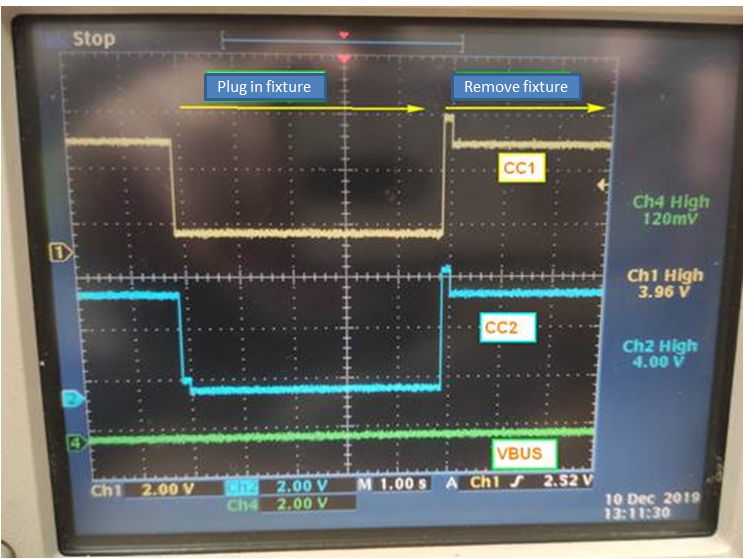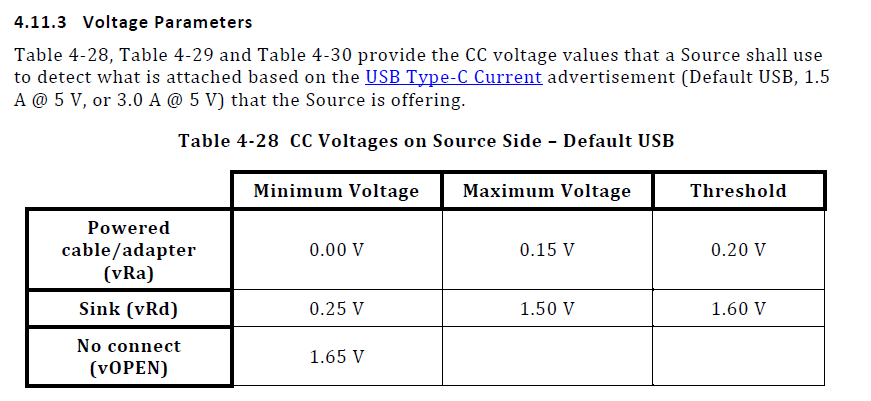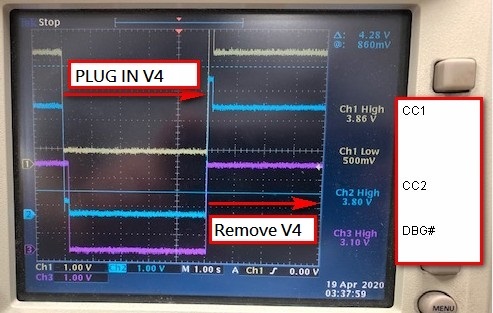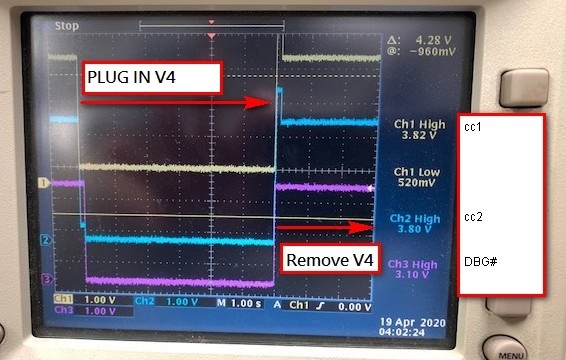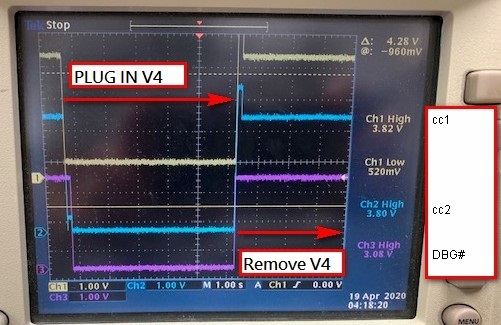Hi,
There's a specific type-c function fixture which is workable with other system (a DRP port), but not workable with the DFP port using TPS25810. Please check below for VBUS/CC1/CC2 waveform at the moment when the fixture is plugged in and removed. Please advice what we can check further to judge why there's not a valid 5V on VBUS when this fixture is connected.
Thanks!
Antony
Antony


